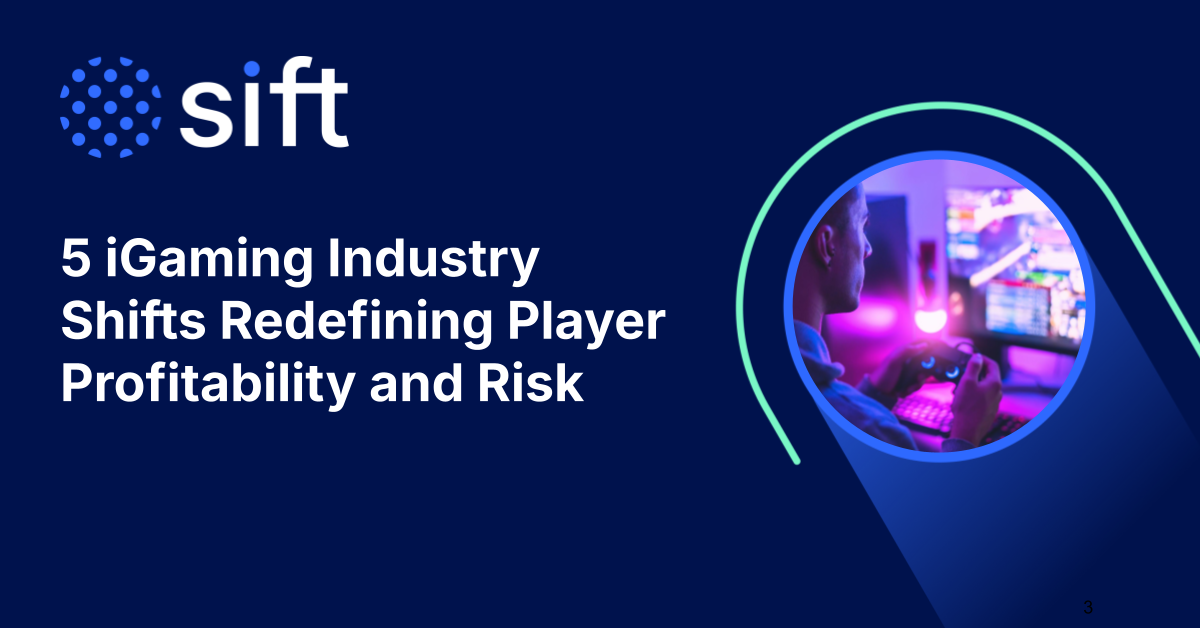The cyber-fraud machine is thriving. Rampant fraud-as-a-service and an underground Fraud Economy generate $160B annually trading stolen account data alone, and 76% of risk professionals report that their businesses have been targeted specifically by AI-driven threats. This highly lucrative and unrestricted landscape has helped fraudsters become adept at adopting and refining their tactics across borders, tailoring their strategies to go directly after specific industries. As these threats escalate, many companies find themselves struggling to keep pace, lacking the visibility needed to combat these sophisticated schemes—and resulting in spreading revenue loss.
Stop the Bleed: A $160B Industry Fueling Revenue Leakage
The impact is undeniable. Account takeovers are accelerating, leading to revenue losses as high as 6% per monthly active user for some industries. Payment fraud is also on the rise, with sectors like online retail and gambling reporting 1 in 23 payment interactions as fraudulent. Based on Sift’s Global Network of 1 trillion annual events, Sift has seen simultaneous fraud attacks across different industries originating from the same group of related IP addresses with other common attributes.
As businesses face economic pressures and heightened scrutiny on cash flow, reducing revenue loss from fraud has become a critical focus. To address this, companies with substantial IT resources have invested millions in developing custom risk models tailored to their digital footprints. Meanwhile, others rely on outdated static rules engines.
Both approaches are increasingly inadequate, as they fail to respond swiftly to the ever-changing tactics of global fraudsters. While industry-specific fraud detection models have offered some relief, they often fall short by overlooking the common practice of fraudsters hopping between industries. As a result, companies must seek out more dynamic and cross-industry solutions to stay ahead in this escalating battle against fraud.
While a global and cross-industry model are more in line with the fluid nature of fraud, this approach merges behavior trends which may differ across segments. Combining these behavioral trends may make it more difficult to differentiate the nuances between normal and abnormal trends.
The Goldilocks Principle: Triangulated Risk Insights
Today, I’m thrilled to introduce Sift’s latest innovation: ThreatClusters, a revolutionary approach to AI-powered risk decisioning that uses a multi-pronged method, combining the precision of customer-specific risk models with the broad intelligence of a global model, in order to derive risk signals that are unique to each industry.
Our customers are the first in the market to tap into the real-time insights of Sift’s Global Network while automatically accounting for the unique nuances of their specific industry, along with custom signals of their digital platform, with a finely-tuned ensemble model that represents all three.

This unique approach can improve fraud decision accuracy by reducing the risk of false positives/negatives up to 20% by fine tuning risk models to incorporate the real-time behavior traits of a cohort of peers, in addition to new-to-cohort fraud patterns. In doing so, fraud teams can drive manual review efficiency by reducing overall case reviews. But more importantly, they can apply highly-refined friction decisioning.
Customer retention and customer experience go hand-in-hand. By removing unnecessary obstacles to conversions and fast-tracking revenue opportunities, businesses can provide the smoothest journey and highest level of convenience for trusted users. For new customers, ThreatClusters provide faster time-to-value by integrating global and cohort models that enhance model accuracy and reduce adoption timelines.
ThreatClusters is just one of the latest ways Sift is advancing how we approach AI for fraud detection and decisioning. As a fast-follow to RiskWatch, released earlier this year, Sift continues to reduce the pressure on fraud teams to manually adjust risk thresholds with enhanced Advanced Model Tuning. Sift’s newest approach conducts highly granular, quantile analysis of digital activity that automatically accounts for potential data anomalies common in seasonal business cycles and fraud attacks.
Other Innovative Releases Addressing Advanced Threats
ThreatClusters and advanced model tuning have been released alongside several other critical features this past quarter. These enhancements deliver unparalleled insights and control, empowering businesses to detect and prevent complex fraud behaviors, like account takeovers, efficiently and at scale.
- Reduce Friction While Protecting Against Account Takeovers: Gain deeper control and flexibility in reducing friction by fortifying protection across the entire customer journey. With AI-powered insights, fraud teams can now precisely monitor, detect, and prevent account takeovers by identifying subtle behavioral changes, such as velocity shifts in account information or unusual device location changes within or across sessions. While standard practice is to check for ATO upon login, Sift allows customers to continue monitoring users post-login—minimizing friction and manual intervention.

- Fortify Account Protection with Email and Name-Based Fake Account Detection: Combat sophisticated account takeover attempts and stolen payment fraud with real-time insights into the risk levels of email addresses and associated names. This feature detects anomalies in email characteristics, such as gibberish names or suspicious updates, and assesses the risk tied to billing and shipping addresses, providing a stronger defense against fraudulent accounts.
- Reduce Payment Risk with Advanced Payment Risk Analysis: Improve fraud detection accuracy by leveraging AI-powered analysis of key risk signals like payment type, card BIN, and the last four digits of card numbers. This technology pinpoints when a payment method is used by multiple parties, reducing false positives and offering an additional layer of protection that integrates seamlessly across different systems.
- Uncover Peer-to-Peer/Marketplace Risk: Uncover complex fraud patterns, such as buyer-seller collusion and money movement fraud, with 30+ AI-driven risk signals. These signals reveal hidden connections between personas and automatically analyze transaction velocities and account activities, answering critical questions like “Is this user initiating a large amount of transactions to another specific user?” and “Is the buyer interacting with a seller that has been associated with a recently high failed transaction rate?”
- Simplify Automation Management: Simplify fraud prevention strategies by consolidating multiple rules and handling instances of missing data. These enhancements allow fraud teams to navigate a complex fraud landscape with greater ease, boosting operational efficiency, and enabling more flexible adaptation to evolving fraud patterns through advanced routing logic.
ThreatClusters and other new releases are available for Sift customers who use our platform for account creation, account takeover, content, payment, policy, and chargeback fraud. Reach out to sales@sift.com to see our innovations in action.







